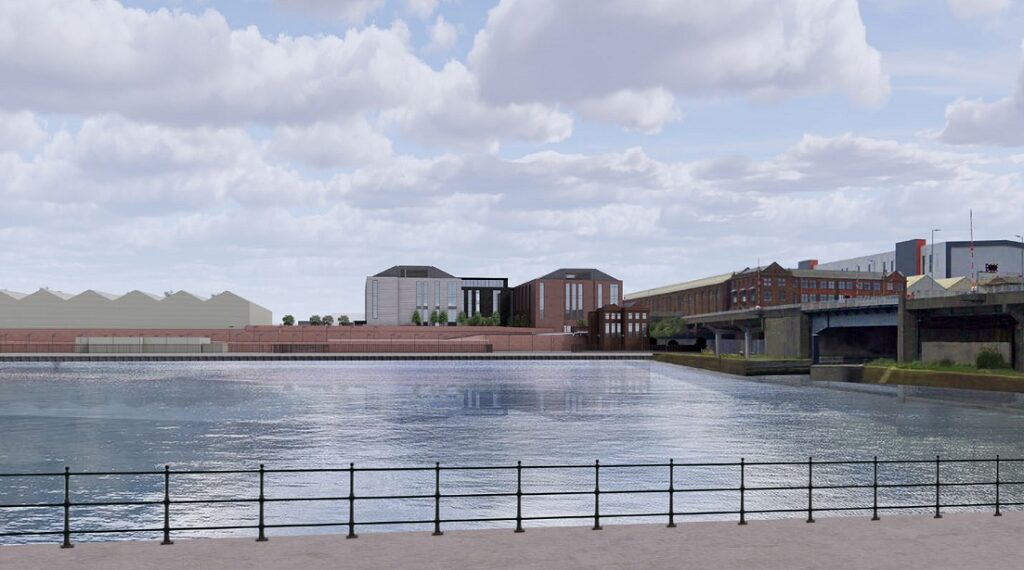Why planners need to think big on the environment
Environmental change impacts us through global warming and biodiversity decline. Both respond to each other, and right now that feedback is negative. The planning profession has the tools needed to take up this call and we, as planners, must act. It will require a new manifesto, writes Jeremy Hinds, planning director at Savills.
A new manifesto with a bigger vision
This new manifesto must address global warming and biodiversity decline. Both operate at scale and the effects of each can be felt at the global and local level.
At the local level, we deal with extreme heat through construction techniques. We use non-brick construction materials that don’t retain heat, incorporate brise-soleil into façades and locate bedrooms on north-facing elevations.
But whilst we can deal with the impact of extreme heat at the localised level, addressing the cause must be at the global, or at the very least, national level.
Nations must accelerate their response, think bigger and adopt a national vision that goes beyond project-by-project mitigation.
A national spatial plan
Countries must each put in place a national spatial plan identifying areas for protection and enhancement, all with the mindset of combatting our biodiversity and climate crisis.
With a national plan in place, we could accept some degree of local impact because we could measure the greater positive impact elsewhere.
This vision needs to come from the top down. The time for nebulous ambitions and soft targets is over. Across the built environment, we’re screaming out for leadership in the form of legislation and policies.

Joining forces to achieve genuine biodiversity net gain
In the UK, recent legislative changes to biodiversity net gain reflect how pivotal biodiversity is to global climate and, therefore, our very survival. But let’s be frank. If the purpose of biodiversity improvement at the local level is to tackle environmental change, then a newt pond simply won’t cut it.
Countries will need to identify suitable areas for protection and the creation of vast areas of woodland, or better still, areas of peatland.
The problem is restoration projects that would actually make a difference cost millions to deliver. So, we’ll need to pool financial resources to achieve meaningful interventions. One way this can be achieved is via nationally-based taxation schemes.
Only when we see things through a national or indeed global lens, can we make the most effective response.

Countries need to think laterally
A national plan would set the right context for what we are trying to achieve, identifying areas of opportunity for environmental improvements and, by omission, highlight areas that can accommodate more intense development. Yes, there will be winners and losers. But we need to see the bigger picture. Otherwise, we will all be losers.
Rather than focusing mitigation locally, such as our modest newt pond, it would provide the means for developer contributions to be pooled to fund bigger, more expensive, restoration projects.
And it’s not simply about something being bigger and more expensive. It’s about being more effective.
Although peatlands make up just 3% of land on Earth, they store twice as much carbon as all the world’s forests combined. Funnelling developer contributions towards peat restoration 200 miles away, for example, would be far more effective, pound for pound, than on-site tree planting.
With a local approach to mitigation, our impact will always be limited. We need to take a step back from the local level and think laterally to see what would be most effective.

Policies should sidestep local politics
A national plan would remove local debate, which too often stymies progress.
Take wind turbines for example.
The UK could deliver enough onshore wind turbines over the next two years to remove its dependence on Russia’s gas, and yet its energy security strategy completely sidesteps the conversation. It is too much of a political hot potato.
When the local decision-maker must balance a proposal’s national environmental benefits against vehement local opposition, it’s easy to understand why only 11 planning applications for new onshore windfarms in England were approved between 2016 and 2021.
A national plan would alleviate this tension and get them built.
The planning system needs a new framework
I’ve nothing against newts but we simply can’t pretend that a new pond will have any tangible impact on avoiding environmental disaster.
Perhaps millions of ponds would though. Which brings me back to why we need to approach this problem at the right scale.
Planning can deal with both global warming and biodiversity decline. And many countries have the policies in place to deal with them. What’s absent is a national spatial framework that spells out why these things are important and why they have to take precedence over local impacts sometimes.
With a national plan, we would lose an element of local democracy. That won’t be popular. But what if holding too fast to democratic values ends up costing us the Earth?
If we’re going to climb out of the hole we’ve dug for ourselves, we’ll need to change tactics. We must take a step back and consider how we can have the most lasting and beneficial impact.
Mitigating the environmental impact of one scheme by investing in peatland 200 miles away might sound absurd. But, as Einstein said:
“If at first the idea is not absurd, then there is no hope for it.”
- Jeremy Hinds is planning director at Savills





